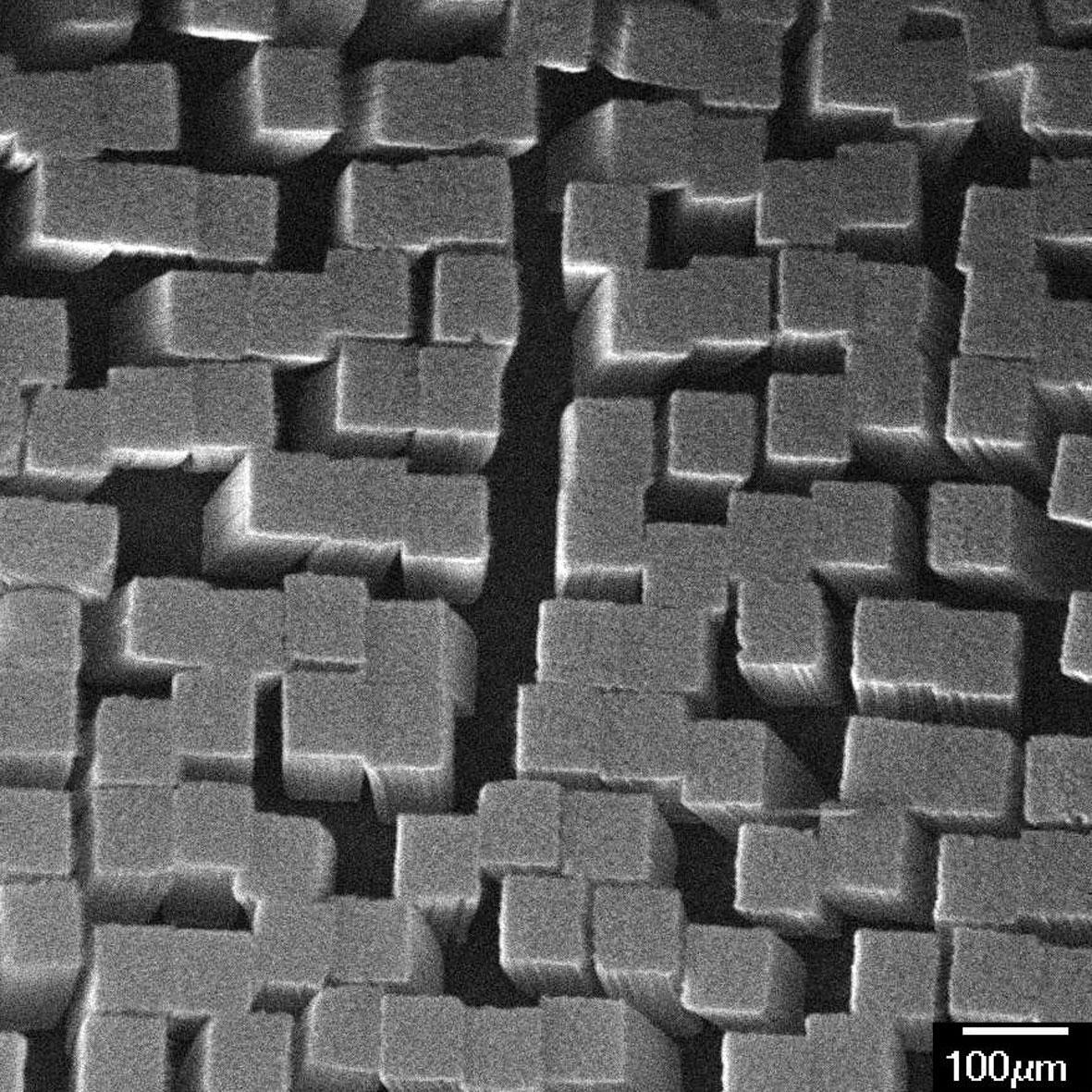DESCRIPTION
The nanoscale structures on a gecko's foot enable it to cling to most surfaces. This scanning electron microscope image shows multiwalled carbon nanotubes attached to a polymer backing, an experiment designed to replicate the gecko foot's adhesive properties. The gecko's amazing ability to cling to vertical or inverted surfaces is due to the interaction between nanoscale structures on its feet and tiny crevices on the wall or ceiling. The soles of gecko feet are made up of overlapping adhesive lamellae covered with millions of superfine hairs, or setae, each of which branches out at the end into hundreds of spatula-shaped structures. These flexible pads—each measuring only a few nanometers across—curve to fit inside unseen cracks and divots on the surface. The combined adhesion of these millions of pads holds the gecko in place. • SIZE: Each bundle of carbon nanotubes measures about 70-80 µm in width. • IMAGING TOOL: Scanning electron microscope
DESCRIPTION
The nanoscale structures on a gecko's foot enable it to cling to most surfaces. This scanning electron microscope image shows multiwalled carbon nanotubes attached to a polymer backing, an experiment designed to replicate the gecko foot's adhesive properties. The gecko's amazing ability to cling to vertical or inverted surfaces is due to the interaction between nanoscale structures on its feet and tiny crevices on the wall or ceiling. The soles of gecko feet are made up of overlapping adhesive lamellae covered with millions of superfine hairs, or setae, each of which branches out at the end into hundreds of spatula-shaped structures. These flexible pads—each measuring only a few nanometers across—curve to fit inside unseen cracks and divots on the surface. The combined adhesion of these millions of pads holds the gecko in place. • SIZE: Each bundle of carbon nanotubes measures about 70-80 µm in width. • IMAGING TOOL: Scanning electron microscope
OBJECTIVES
NANO CONTENT MAP
Nanometer-sized things are very small, and often behave differently than larger things do.
Nanoscience, nanotechnology, and nanoengineering lead to new knowledge and innovations that weren't possible before.
Credits
Ali Dhinojwala, University of Akron - Attribution is required. The creator listed here has made this image available to NISE Network partners for non-profit educational use only. Uses may include but are not limited to reproduction and distribution of copies, creation of derivative works, and combination with other assets to create exhibitions, programs, publications, research, and websites.
The creator listed above has made this image available to NISE Network partners for non-profit educational use only. Uses may include but are not limited to reproduction and distribution of copies, creation of derivative works, and combination with other assets to create exhibitions, programs, publications, research, and websites.

